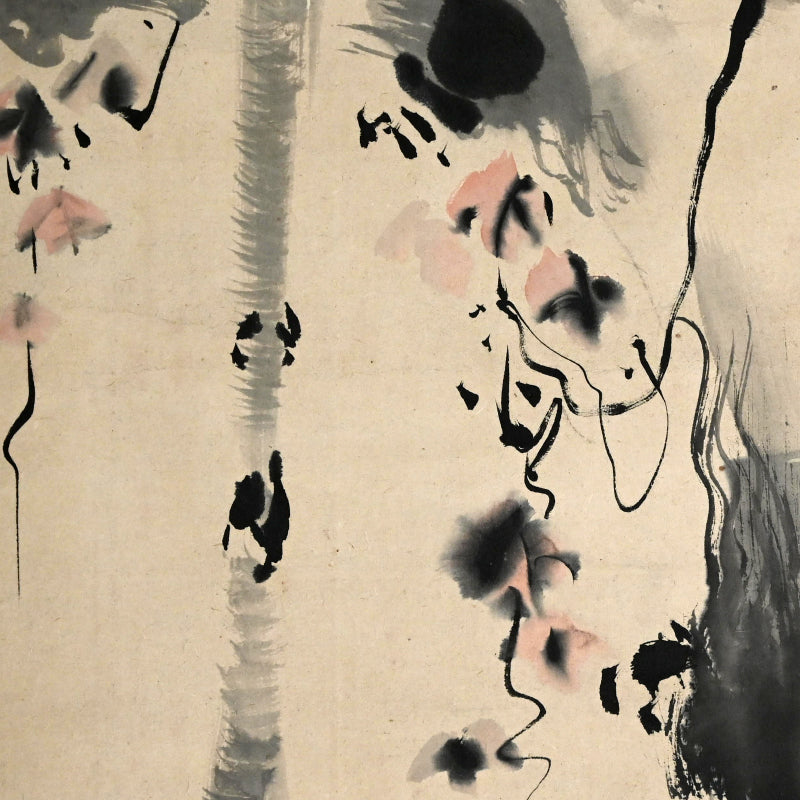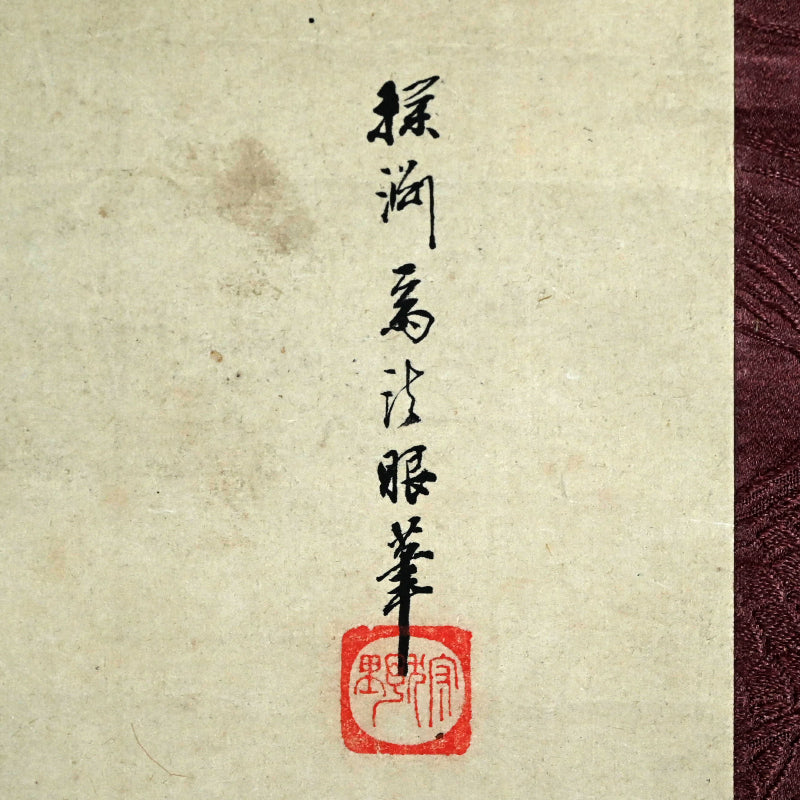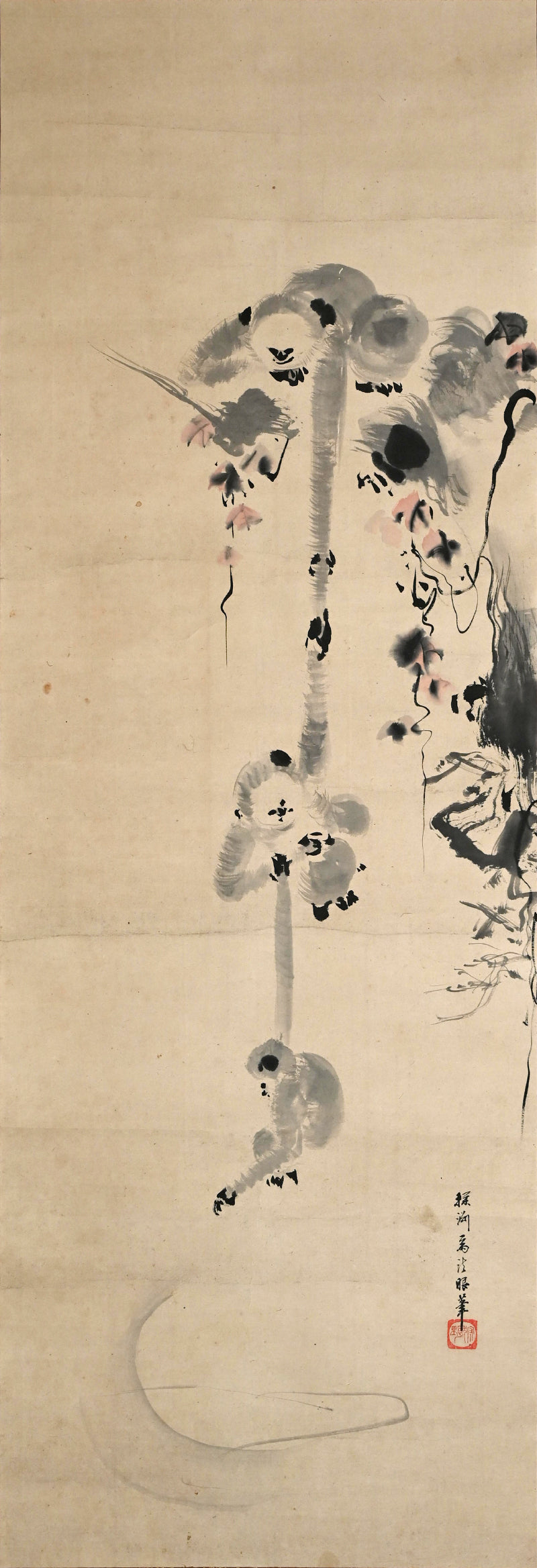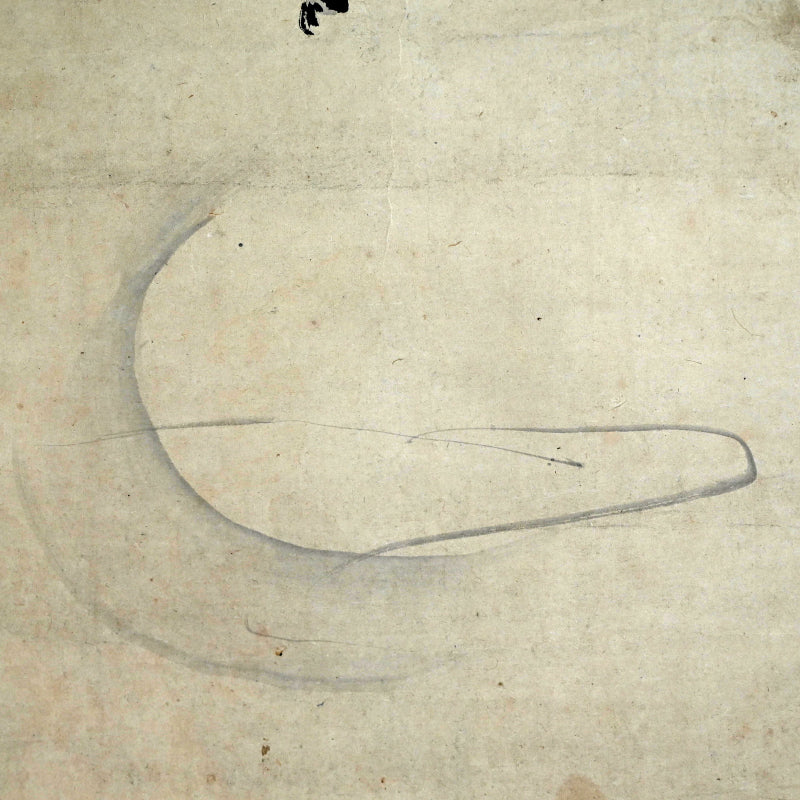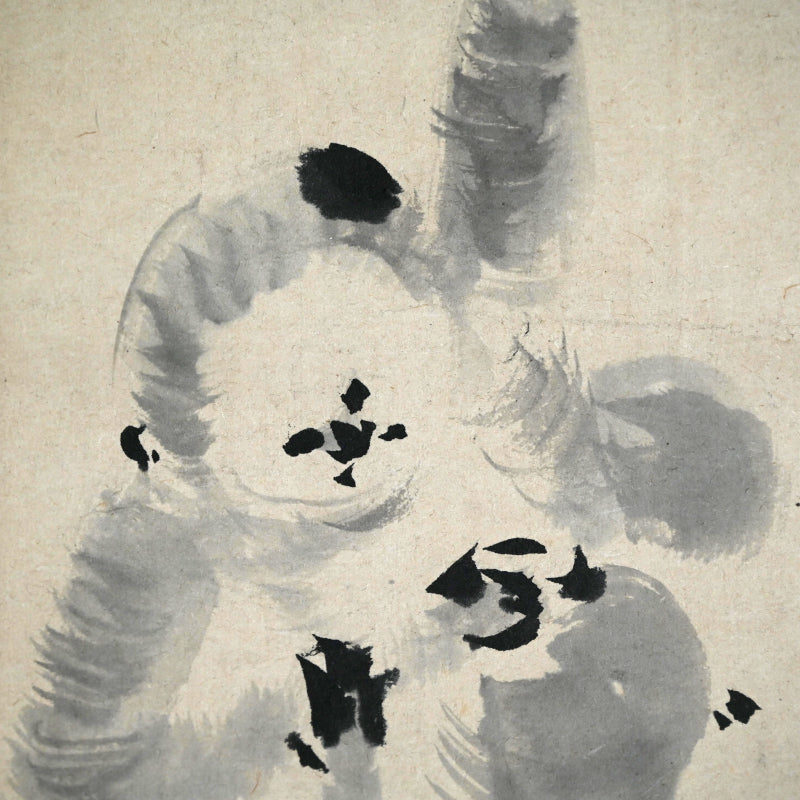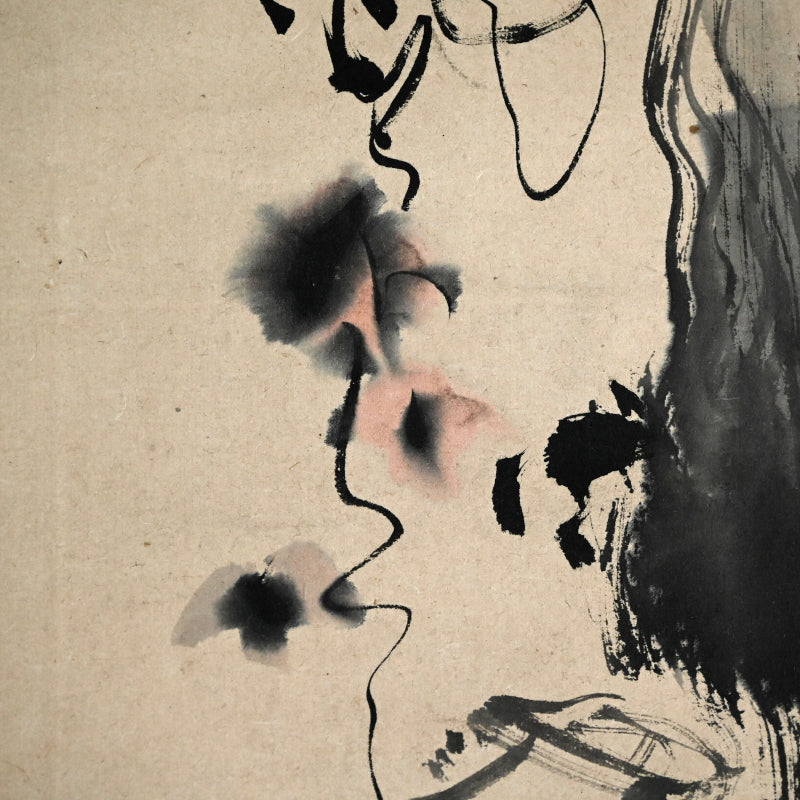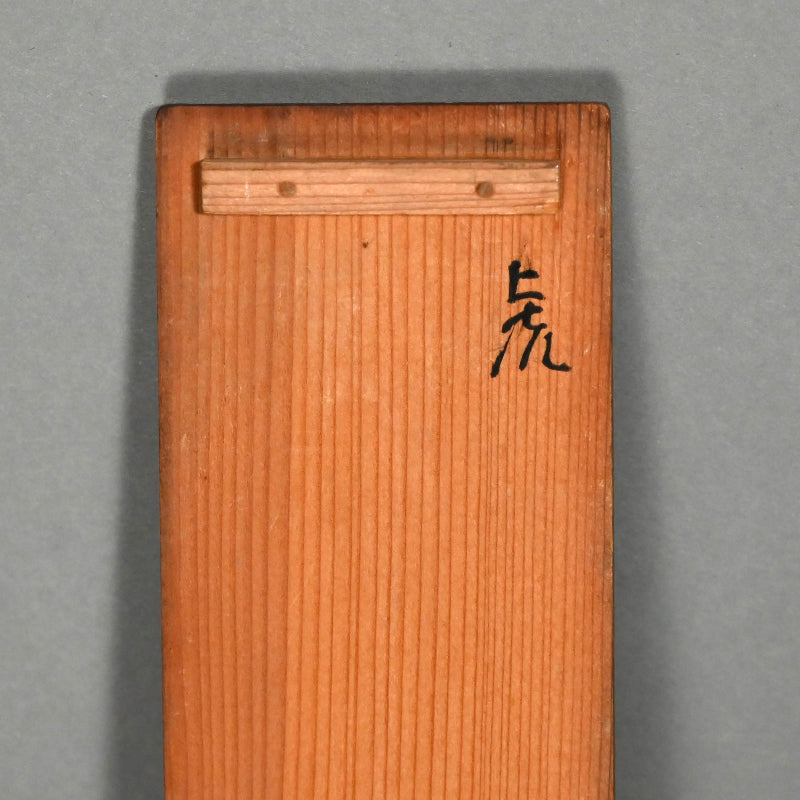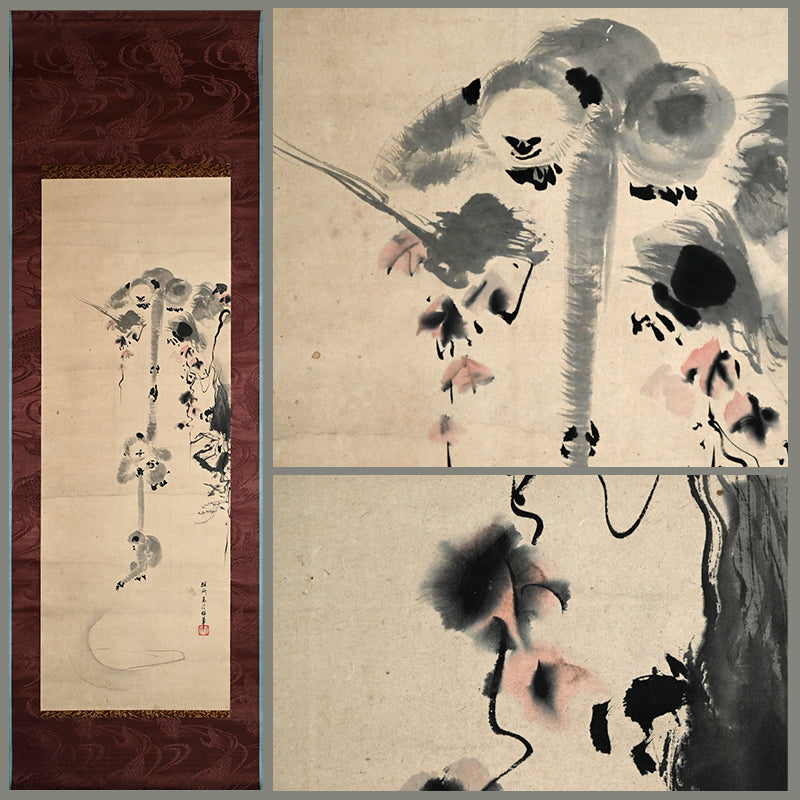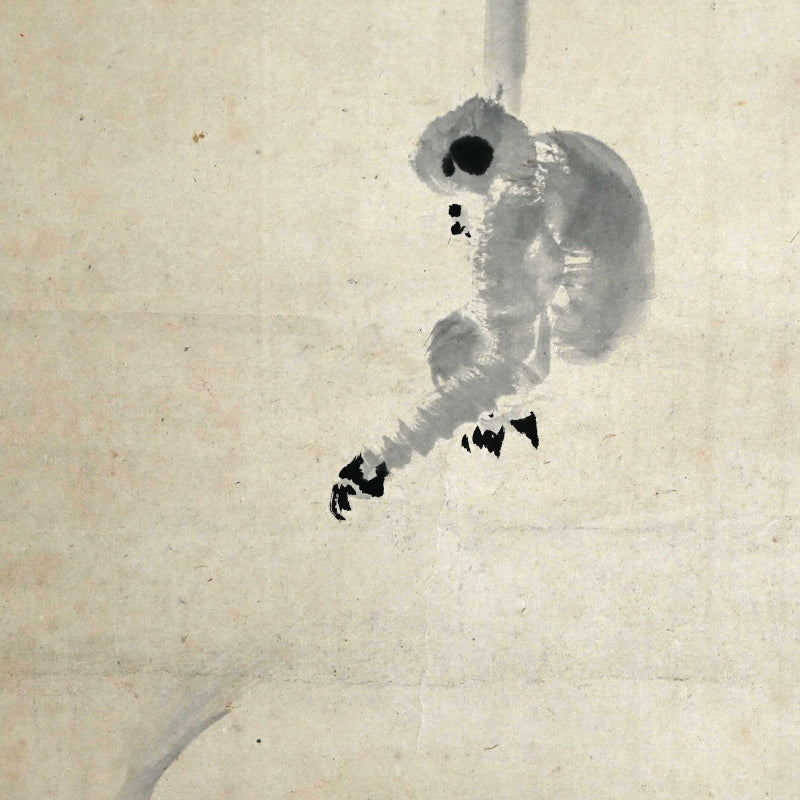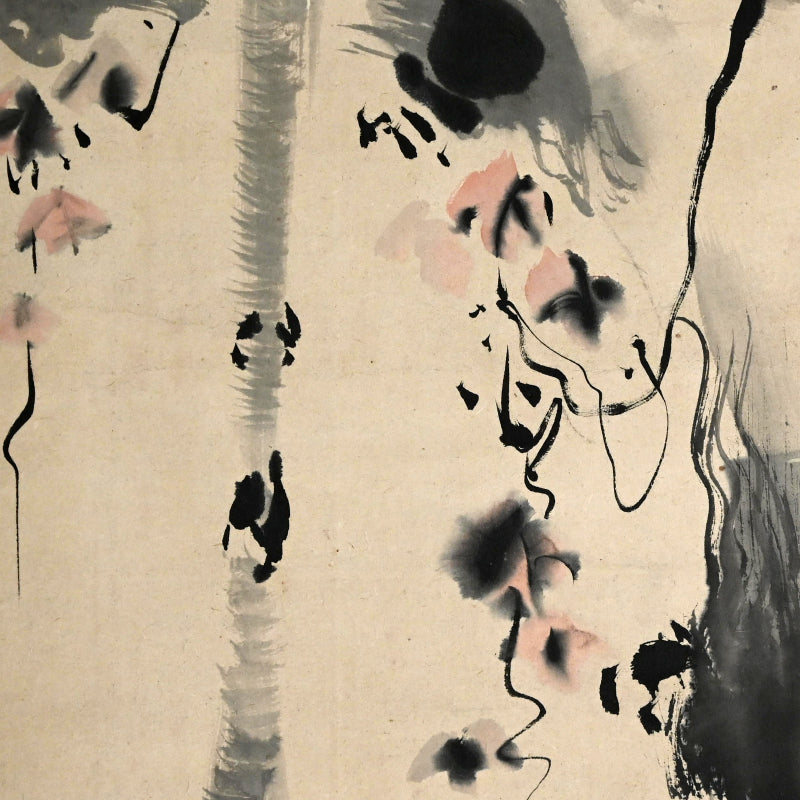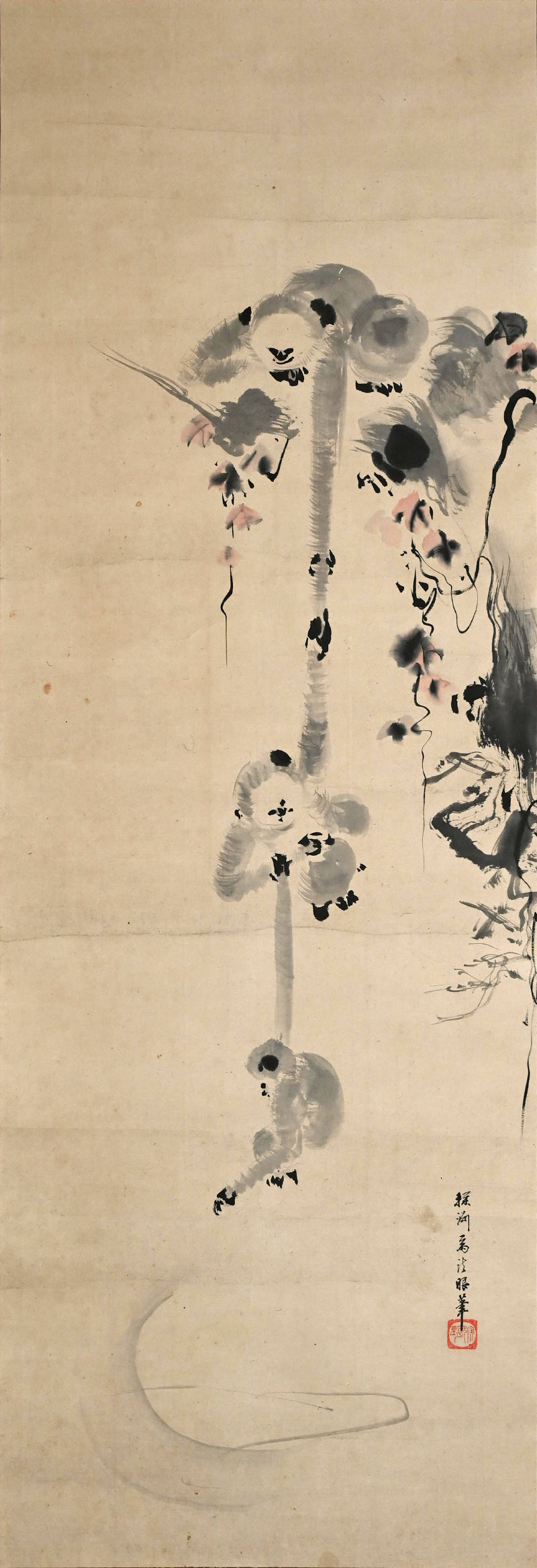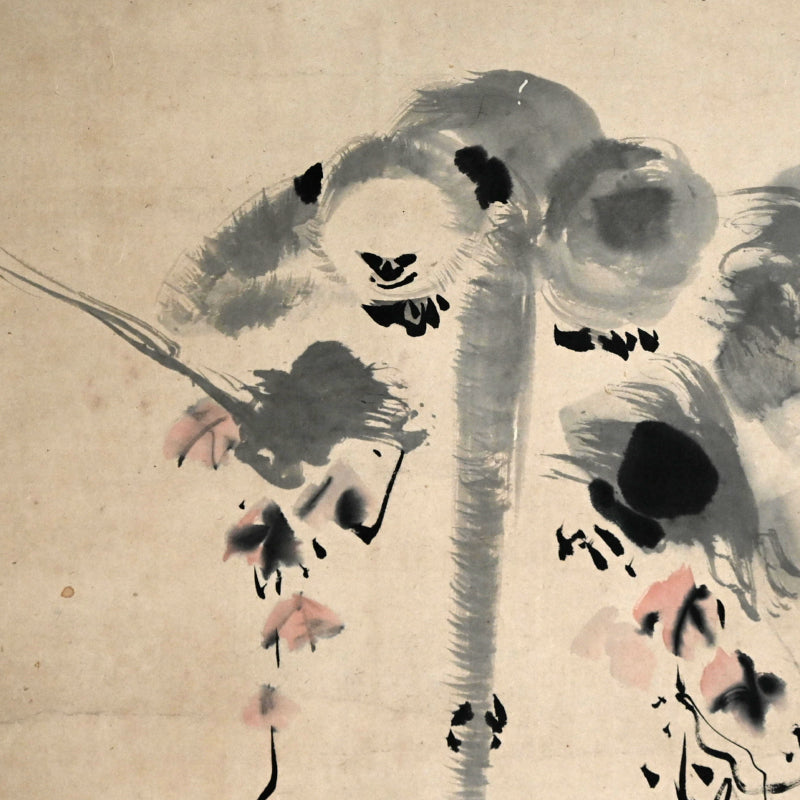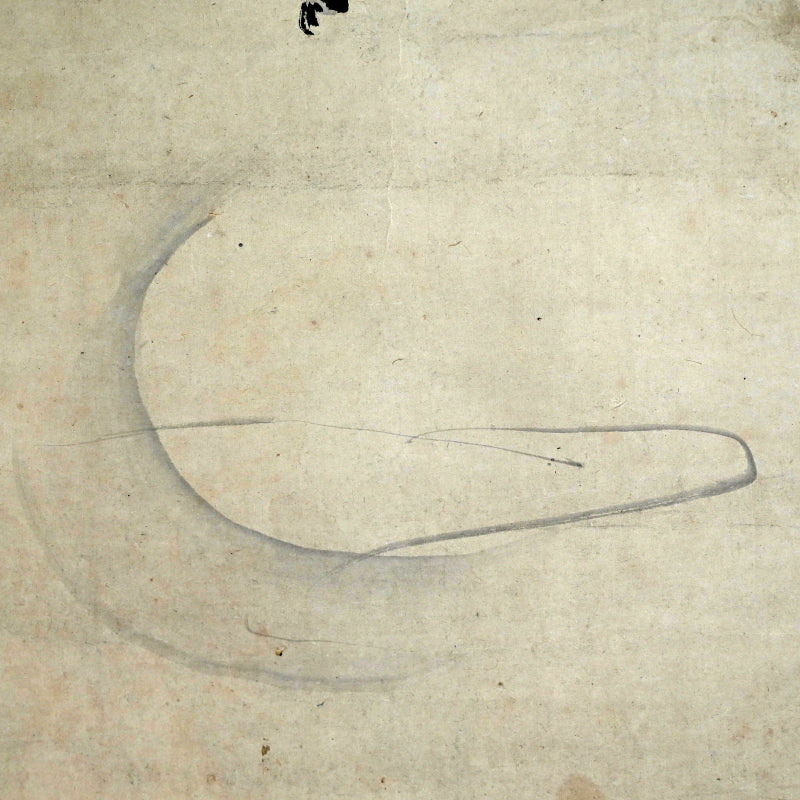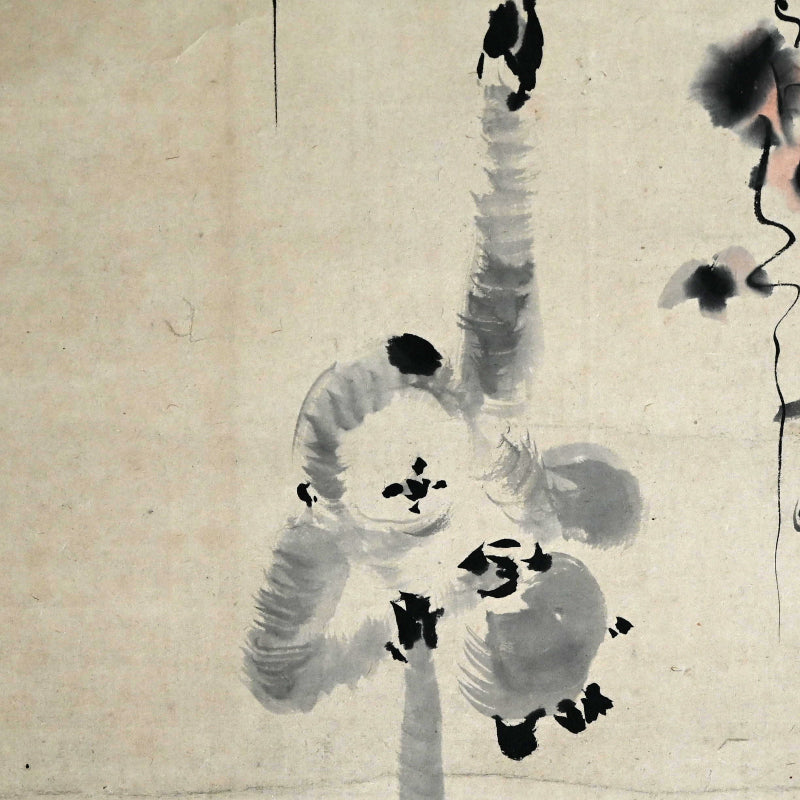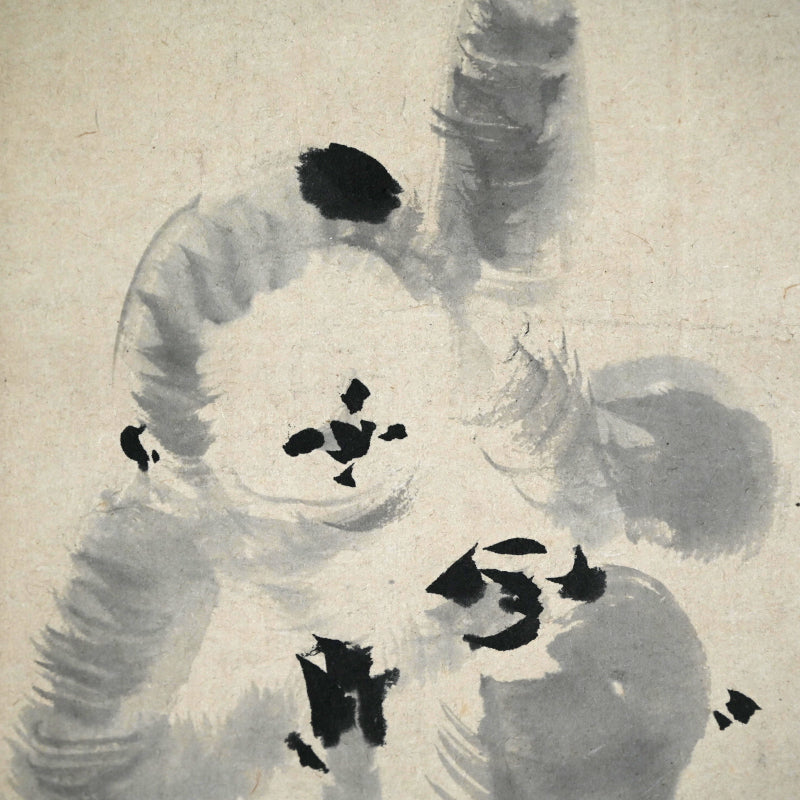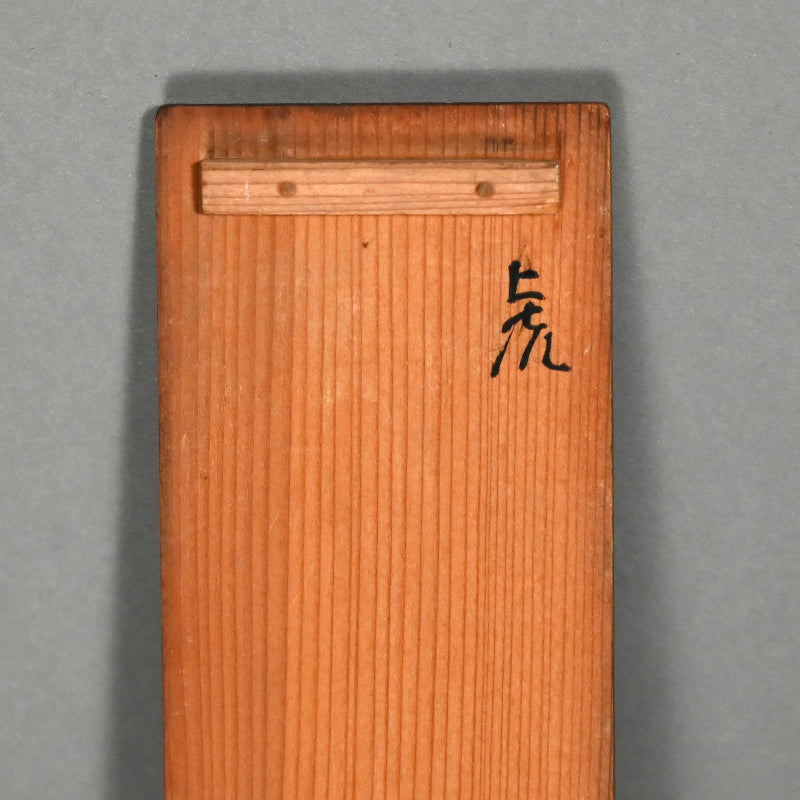Monkeys Grasping for the Moon ー狩野 探淵
Monkeys Grasping for the Moon ー狩野 探淵
Item Code: F093
Couldn't load pickup availability
A string of monkeys reach for the reflection of the moon in this quintessential Kano school image by Kano Tenen. Ink on paper in a maroon silk border of carp swimming in ripples with striking blue piping, the scroll features bone rollers. It is 52 x 165 cm (20-1/2 x 65 inches) and in overall fine condition with minor creases. The motif of monkeys reaching for the reflection of the moon (enkō shakugetsu) holds symbolic significance in both traditional Japanese art and Zen Buddhist thought. It is an image rich with metaphor, often serving as a visual parable about illusion, delusion, and the nature of enlightenment. At its heart, the image depicts a monkey trying to grasp the moon’s reflection in water, mistaking the illusion for reality. No matter how hard the monkey tries, the moon cannot be caught—it is merely a reflection. This is used in Zen to illustrate several core teachings: Just as the monkey mistakes the reflection for the real moon, humans are often caught chasing after illusions—desires, attachments, or mistaken understandings of the self. The monkey's desperate attempts are a metaphor for how unenlightened beings suffer due to ignorance and craving. Enlightenment, in contrast, arises through awareness and direct perception—not grasping or clinging. Zen emphasizes the importance of perceiving reality as it is, without being misled by appearances or conceptual thinking. This motif appears frequently in sumi-e ink paintings, hanging scrolls, and illustrated Zen parables. Sometimes, as in this case, a whole group of monkeys form a chain, each grabbing the next in a futile effort to reach the reflection—a humorous but poignant image about society and our communal habits. In art, it blends humor, elegance, and teaching, offering both aesthetic pleasure and spiritual provocation.
Kano Tanen (1805-1853) was the eldest son of Kano Tanshin (Shudō), a leading official painter of the time. His given name was Morozane, and he also used the art name Tanbun in addition to Tan'en. In 1836 he succeeded his father as head of the Kajibashi Kano family, one of the prominent lineages of the Kano school. Tan'en participated in major commissions, including the production of sliding door and wall paintings for the Honmaru (main keep) and Nishinomaru (western keep) of Edo Castle. In 1844 he was granted the prestigious title of Hōgen, a high honor for painters of Buddhist or official schools. He died at the age of 49. As a key figure in one of the central Kano lineages, he contributed to the continuity of official Edo-period painting tradition through both his inheritance and his work.
Share


